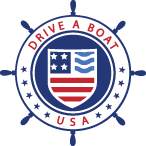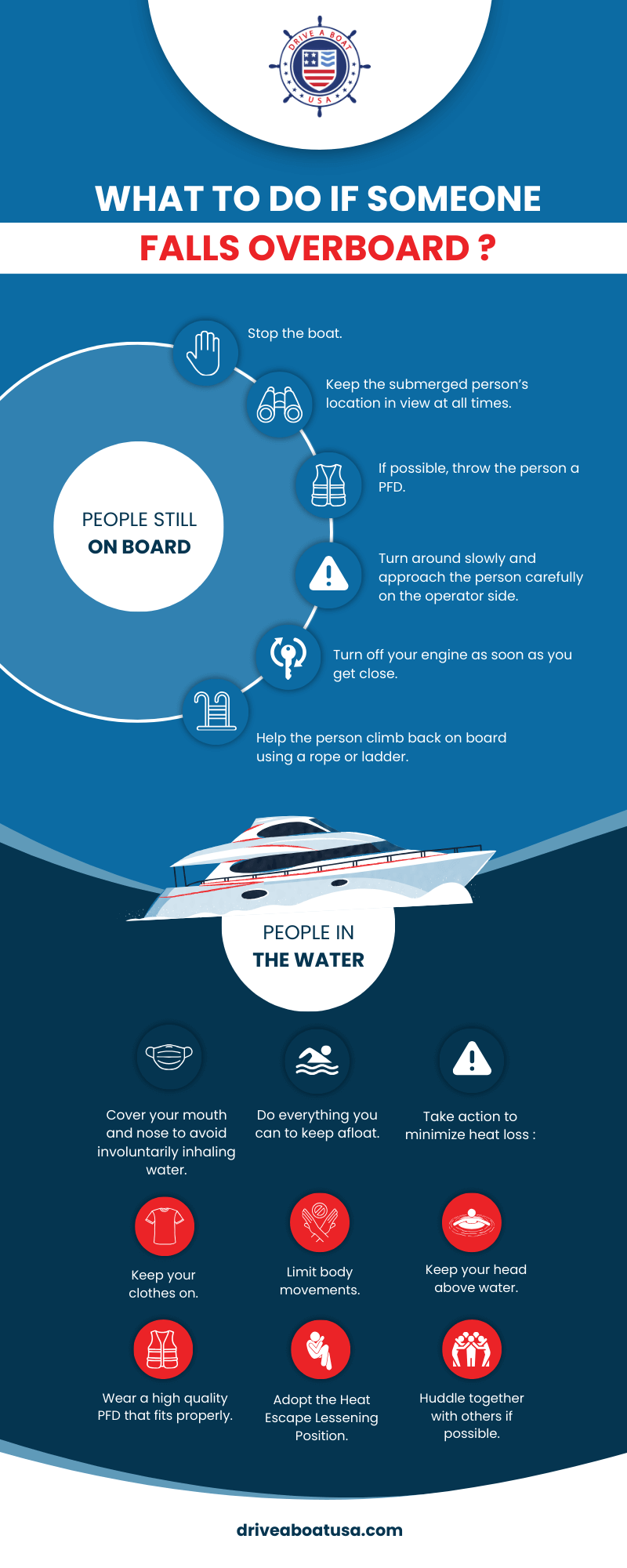Cold Water Immersion: How to Survive Falling Overboard
Every year, boaters in the US drown after falling overboard. The risk of death is even higher when a person falls into cold water.
What to do if someone falls into cold water
First, don’t panic. This goes for both the people on board and the person who has fallen into the water.
What to do if you are still on board
If you are driving a boat when someone falls off, stop the boat immediately. Turn around slowly and approach the person very carefully, keeping them on the operator side of the boat.
Turn off your engine as soon as you get close, to avoid causing injury. Help the person climb back on board using a rope or ladder at the stern.
If you are a fellow passenger, you can help by keeping your eye on the person who has fallen overboard. If possible, throw the person a PFD to help them keep as much of their body out of the water as possible (especially their head) and retain maximum body heat.
What to do if you fall overboard
When you are suddenly submerged in cold water, your body responds by gasping and hyperventilating. Many drownings related to falling overboard into cold water result from this automatic reaction. Try to cover your mouth and nose as you fall to prevent yourself from involuntarily inhaling water.
Once in the water, it’s vital to do what you can to keep afloat and minimize heat loss.
How to conserve body heat in cold water
Immersion hypothermia can set it quickly. Even in mild water temperatures, sudden or prolonged submersion can be deadly. Warm weather does not change this fact.
There are few things you can do to conserve your body heat in cold water:
- Keep your clothes on.
- Limit body movements. Swimming will not warm you up, it will cool you down. Only swim if you are confident that you can reach a nearby object that will help you float or get out of the water. The less you move, the more body heat you can retain.
- Try to keep as much of your body out of the water as possible, especially your head.
- Always wear a high quality PFD that fits properly. Life jackets not only help you float, they also offer some insulation.
- If you are alone in the water, adopt the Heat Escape Lessening Position (H.E.L.P.), also called the fetal position. Pull your knees up to protect the armpits, backs of the knees, sides of the chest and groin. These areas of the body lose heat the most quickly.
- If several people fall into cold water, they can huddle together facing each other with their arms around each others’ shoulders to share body heat.
Stages of cold water immersion
There are four stages of cold water immersion.
- Cold water shock
When you are suddenly immersed in cold water, you will experience what is known as “cold shock”. Your breathing, heart rate and blood pressure will change. This reaction puts you at risk of inhaling water and drowning almost instantly. The risk of drowning is increased in rough waters.
- Loss of coordination
Soon you will begin to lose movement and coordination, making it very difficult to swim or stay afloat. Choose a type of PFD that includes head support so that your head will remain above water even if you cannot swim.
- Hypothermia
Hypothermia is characterised by a dangerously low body temperature (below 95°F, or 35°C). There are three stages of hypothermia, which can lead to loss of consciousness and potentially death. To learn more, refer to our article about the four stages of cold water immersion and hypothermia.
- Post-rescue collapse
After being rescued from cold water, complications can still result in death. Keep the victim warm and dry and perform CPR as needed, but do not massage their limbs. Contact qualified rescue personnel as soon as possible.
Get your state-approved boating license from Drive a Boat USA
Water temperatures can remain very cold even in warm weather. On days when the air temperature is above 60°F, water temperatures can remain dangerously cold. Knowing the risks and how to respond if someone falls overboard could save a life.
You can learn all about safe boating and prove you are ready to operate a motorized boat by getting a state-approved boating license.
Earn any state-approved boating license, including New York, Florida or California, from Drive A Boat USA!


